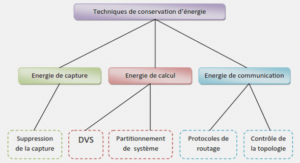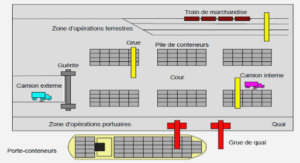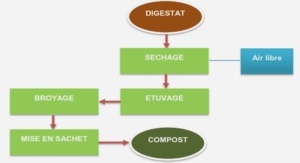Methods of collecting the data
The relationship between the personality and some indicators of job success (such as performance, satisfaction, salary, and status) has gained much attention in industrial psychology in the past century. The term ‘job success’ has been defined as « the positive psychological and work-related outcomes accumulated as a result of one’s work experiences » (Judge, Cable, Boudreau, & Bretz, 1995; London & Stumpf, 1982; Seibert et al., 1999). As one of the most important indicators of job success, the job performance of an employee could be defined as the individual quantity and quality accomplishment of specific job tasks or duties by using the available resources while respecting the organizational standards and the fixed time. As well, it describes the way he/she uses the available resources and time and the energy he/she spends to complete his/her work tasks. In summary, job performance describes how well an employee performs in his/her job. There fore, job performance reflects one’s level of effectiveness in performing specific job tasks and duties and is measured with respect to a specific job (Greenhaus & Parasuraman, 1993). Another important indicator of job success is job satisfaction. Locke (1976) has defined job satisfaction as « a positive emotional state resulting from an appraisal of one’s job. » Job satisfaction can be related to motivation, personal feelings and emotions towards the job and the whole organization, and to personality (traits of the personality of the employee). It is especially associated with job performance because high performance may lead to satisfaction and satisfaction can possibly lead to higher performance. In addition, individual performance is generally determined by five factors: the ability (the capability to accomplish the job tasks), the desire to do the job (the motivation), the personality accord (how much the individual’s characteristics are suitable for the job?), the work environment, and the tools, materials, and information needed to do the job.
Therefore, since personality can play an important role in an individual’s performance in different jobs, the relationship between personality, job performance, and job satisfaction has been a frequently studied topic in industrial psychology in the past century. Over the past 40 years (from 1970 till 2009) the number of publications and researches studying the validity of some factors of personality as predictors of individual’s performance has significantly increased. Further meta-analyses have affirmed the utility of using personality measures for personnel selecting purposes, helping the students to select the appropriate field with regard to their tendencies and characteristics, and for predicting overall individuals’ performances which includes the academic performance (for students) and job performance (for employees). It is widely agreed that these personality traits could strongly affect the outcomes of performance such as the academic results and achievement of students or the quality and efficiency of employees’ performance. As well, recent research by Ackerman and Heggestad (1997) suggested that individual difference variables such as personality, intelligence, and vocational interests can be used to explain not only the variance in academic performance, but also the processes by which traits influence examination outcomes.
Big five personality dimensions
Job performance can be affected by situational factors such as the characteristics of the job, the organization and co-workers (Hackman and Oldham, 1980; Striimpfer, Danana, Gouws and Viviers, 1998), and by dispositional factors which include personality characteristics, needs, attitudes, preferences and motives that result in a tendency to react to situations in a predetermined manner (House, Shane and Herrold, 1996). Job performance is also influenced by aptitude, need for achievement, self-regard, locus of control, affective temperament and the interaction between these constructs (Boshoff and Arnolds, 1995; Wright, Kacmar, McMahan and DeLeeuw, 1995). Therefore, it is widely agreed that personality variables can be significant predictors of individual performance when carefully matched with the appropriate occupation characteristics and organization.
Among the personality traits that have been frequently shown to be related to performance, the big five factors of personality or the Big Five: self-esteem, sense of personal efficacy, locus of control, personal satisfaction of performance and of life as a whole. Researchers believe that the differences in human personality and behavior can be mainly grouped in terms of the Big Five factors of personality which are identified as conscientiousness, neuroticism (vs. emotional stability), extraversion, openness to experience (intellect) and agreeableness. These five broad dimensions describe the human personality according to the differences between individuals in characteristics; aptitudes, intellect, and personal interests and preferences. The Big Five have been studied and validated by many different psychologists in different cultures and traditions (Norman, 1963; McCrae and Costa, 1987; Brand and Egan, 1989; Goldman, 1990; Sinclair, 1992), and they were the base of most later personality questionnaires.
The emergence of the Five Factors Model of personality
The theoretical background of the Five Factors Model of personality (theoretical perspectives)
Allport and Odbert (1936) were the first researchers identify a set of words describing personality characteristics in the English language. With a conclusion of 4,500 words, it was the primary starting point of language-based personality trait research for the last sixty years (Howard and Howard, 2004). Later, Cattell (1946) scientifically drived 16 personality traits using factor-analytic and related statistical procedures, suggesting that these factors represent the major dimensions for explaining the differences in human personality (Liebert and Spiegler, 1994). However, Fiske (1949) suggested that five, not sixteen, factors accounted for the variance in personality trait descriptors. Although other theories of personality were based on psychological theory, it can be clearly seen from the development of the Five Factors Model that it is mainly empirically based, that it was founded in factor analysis. Using this process of factorial analysis, Tupes and Christal (1961) originated the theory of five underlying factors which are the basis of personality measurement. This theory was refined by Norman (1963), Eysenck (1967), and Costa and McCrae (1992) later developed a solid basis for the Five Factors Model. Since that time, FFM has received wide notice in the field of psychology. Many studies have confirmed that the Big Five factors emerge quite consistently in different populations of individuals, including children, college students, older adults, and speakers of different languages (Costa and McCrae, 2004; McCrae et. al., 2004; Aluja et. al., 2005).
The five factors or dimensions of the Five Factors Model of personality (the Big Five) consist of:
Conscientiousness
This factor describes how much a person is self-disciplined, dutiful, hard-working, organized, and well-planned. Barrick and Mount (1993) defined this factor as selfcontrol and the active process of planning, organizing, and carrying out tasks. This dimension has great effect on a person’s values and behavior. Conscientious people are concerned about doing their duties and making sure that tasks get done perfectly. They are responsible, well-organized, focused, determined, strong-willed, and dependable. On the negative side, a high conscientiousness degree may cause annoying fastidiousness, compulsive neatness or workaholic behavior. Unconscientious individuals are more flexible and spontaneous. Low scorers may not necessarily lack moral principles, but they are less exacting in applying them. Very low-scoring conscientiousness people are unreliable, disorganized, and easily distracted (Rothman and Coetzer, 2003).
Neuroticism (vs emotional stability):
As opposed to emotional stability, this factor indicates that a person’s personality is characterized by anxiety, nervousness, and high irritability. Neurotic people have high levels of negative emotions such as anxiety, worry, bad temper, depression and guilt. An elevated neuroticism score points out that the person tends to have a nervous and irritable character, to be less able to control anxiety and to deal poorly with stress. A highly neurotic person is emotionally reactive and easily inflamed. He can’t usually recover from depression and shocks easily. He is always stressed, nervous, and subject to depression. A low neuroticism score indicates that the person is emotionally stable. These people are usually calm and relaxed, have high control of their anxiety, are not prone to getting nervous and can deal adequately with stressful situations.
Extraversion
This factor is characterised by sociability. Extraverted people are very sociable, they like to attend parties and other social events and they have many friends. They have great ability to talk and to express emotions and they can communicate easily with people. On the other hand, introverted people often prefer to spend much time alone. They are conservative and don’t easily integrate with other people. Usually, they don’t like to attend parties and events and when they do they stay in a corner in the party. Extraversion is characterized by positive feelings and expression and this can have positive effects on work and on life in whole. Many researchers affirm that extraversion is a valid positive predictor of work performance and success in jobs which involve social interaction, such as sales personnel and managers (Barrick and Mount, 1991; Bing and Lounsbury, 2000; Lowery and Krilowicz, 1994; Vinchur et al., 1998).
Openness to Experience
This factor indicates how much someone is open to new experiences and ideas. An open person always seeks to learn new experiences and to innovate new ideas. He/she has active mind and imagination and he/she has great curiosity and attentiveness to have new knowledge and skills. People who score high on this dimension are artistically sensitive, curious, creative, and they are ready to learn new skills. Their lives are experientially richer than those with low scoring. On the other hand, people scoring low on openness tend to be conservative and cautious in behavior. They prefer the familiar to the innovative.
Agreeableness
This factor describes whether someone is amiable or agreeable to other people. An agreeable person has a pleasant character, is fundamentally kind, trustful, cooperative, warm, and ready to help and support others. A disagreeable person is cold, unpleasant, uncooperative and sometime aggressive. He/she cares much more about climbing toward high positions without regard to other considerations and other people.
These Big Five dimensions represent wide areas of personality. Research has demonstrated that these groups of traits assembled in each dimension of personality tend to be consistent and to occur together in many people. For example, although extraverted people are sociable and talkative, it isn’t necessary that these two traits occur together all the time. Personality is complex and varied, and each person may respond to situations through all these five dimensions.
How can the Big Five affect individual performance?
Job performance can be influenced by two fundamental groups of factors;
• Organizational and situational factors which pertain to the job and the organisation as a whole, such as the nature, characteristics, and requirements of the job, the co-workers and workmates, the managerial system of the organization (including human resources management), and the organization’s general purposes and aspirations.
• Dispositional and personal factors or individual factors such as personality characteristics, needs, tendencies, preferences, attitudes, motives, and personal goals. The effect of personality as an influential factor on individuals’ performance has been covered throughout the present century in many studies and meta-analyses across different countries and cultures in order to understand how personality factors (especially the Big Five) can affect individuals’ academic or job performance in different jobs or learning fields. Most differences between the results of these studies and meta-analyses were related to which factors of the Big Five are the most significant and influential and whether these factors affect the performance negatively or positively. The number of studies and articles which discuss the use of personality factors to predict individuals’ work performance increased significantly from 1995 till today because of the growing interest in this subject (personality and individual perofrmance) in human resources management field. From 1970 till 1994, the number of publications related to this subject was about 100. Since 1995 till 1999, the number of publications has exceeded 100. Since 2000 till 2009, the number of these publications has exceeded 400 papers and studies (APA PsycNet « American Psychological Association »).
The expected relationship between Big Five factors and individual performance (Hypotheses):
Based on the results of the previous studies which investigated the relationship between personality and global individuals’ performance and the effect of each factor of personality in the academic performance in particular, we can expect some effects of each of the Big Five factors on the academic performance and success.
Conclusion
Personality is the total sum of ways in which an individual feels, thinks, realizes facts, responds in different situations and interacts with others. It affects his/her way of thinking and realizing and it shapes his/her behaviour and actions. An individual’s personality consists of a set of broad characteristics and their subfacets such as shyness, aggressiveness, submissiveness, modesty, sociability, nervousness, etc. These characteristics fall into broad groups called personality dimensions or traits, which remain stable throughout most of an individual’s life.
|
Table des matières
Introduction and General Objectives
> General objectives and Utilities of the research
Chapter 1: Big Five dimensions of personality and Five Factors Model of Personality (FFM)
1.1 The Big Five personality dimensions
1.2. The emergence of the Five Factors Model of Personality
1.2.1. The theoretical background of the Five Factors Model of Personality
1.2.2. What is the Five Factors Model of Personality?
1.3. How can the personality factors affect work and life behavior of individuals?
Chapter 2: How can the Big Five affect individual performance?
2.1. The expected relationship between the Big Five and individual performance
(Hypotheses)
Chapter 3: Methodology
3.1. Specific research objectives
3.2. The sample
3.3. Procedure
3.3.1. Methods of collecting the data
> Questionnaire
3.3.2. The variables of the research
> Independent variables
> Dependant variables
3.4. Measures
3.5. Tools of analysis
Chapter 4: Analysis
4.1. Sample analysis
4.1.1. Gender of participant
4.1.2. Title of course
4.1.3. Course results (Success)
4.1.4. Exam grades
4.2. Correlations analysis
> Correlation Test
4.2.1. The correlation between conscientiousness and grades
4.2.2. The correlation between emotional stability and grades
4.2.3. The correlation between extraversion and grades of both of courses
4.3. Regression analysis
> Ordinal Regression Test:
4.3.1. Conscientiousness/ grades regression analysis:
4.3.2. Extraversion/exam grades regression analysis :
Chapter Five: Discussion and Conclusion
![]() Télécharger le rapport complet
Télécharger le rapport complet






